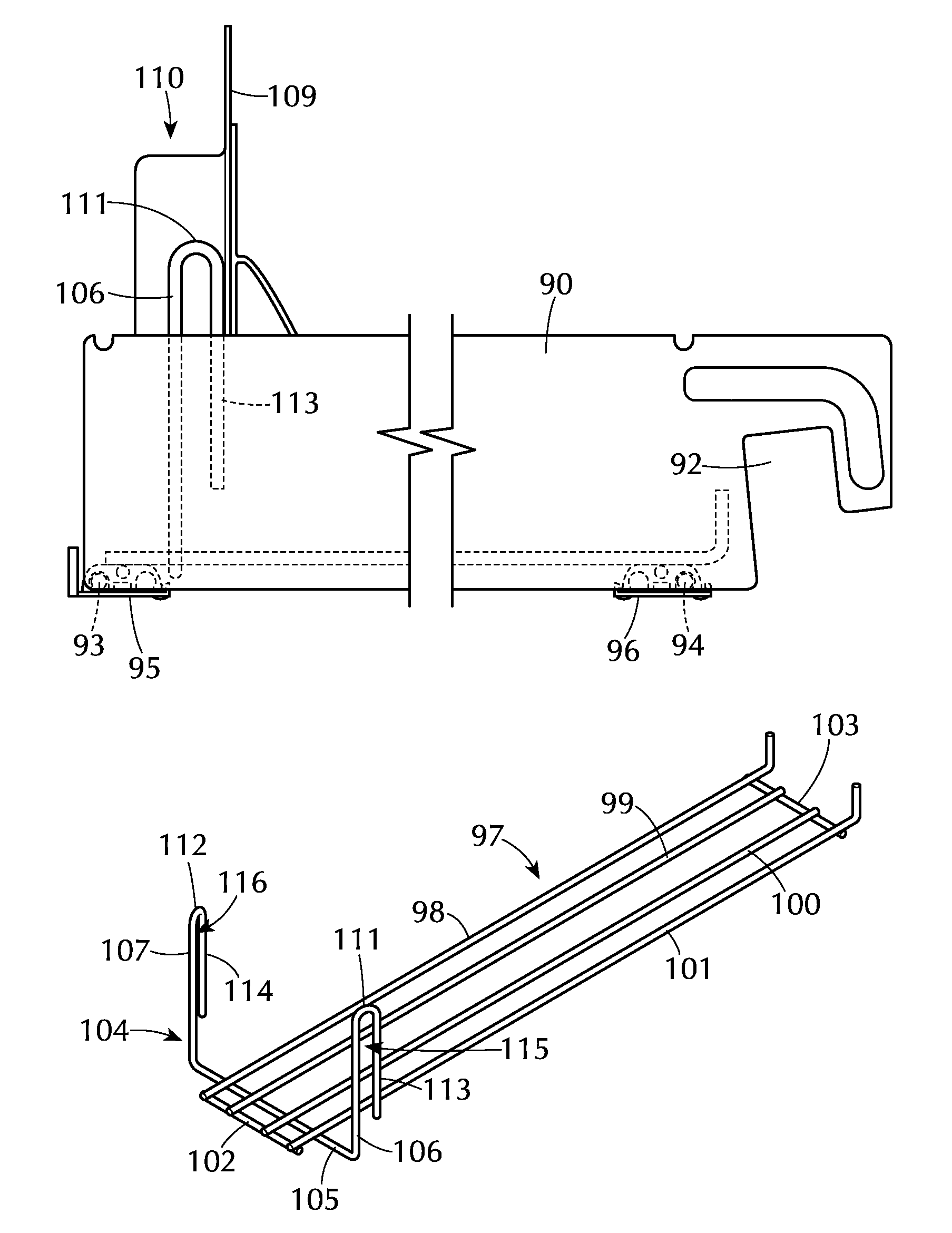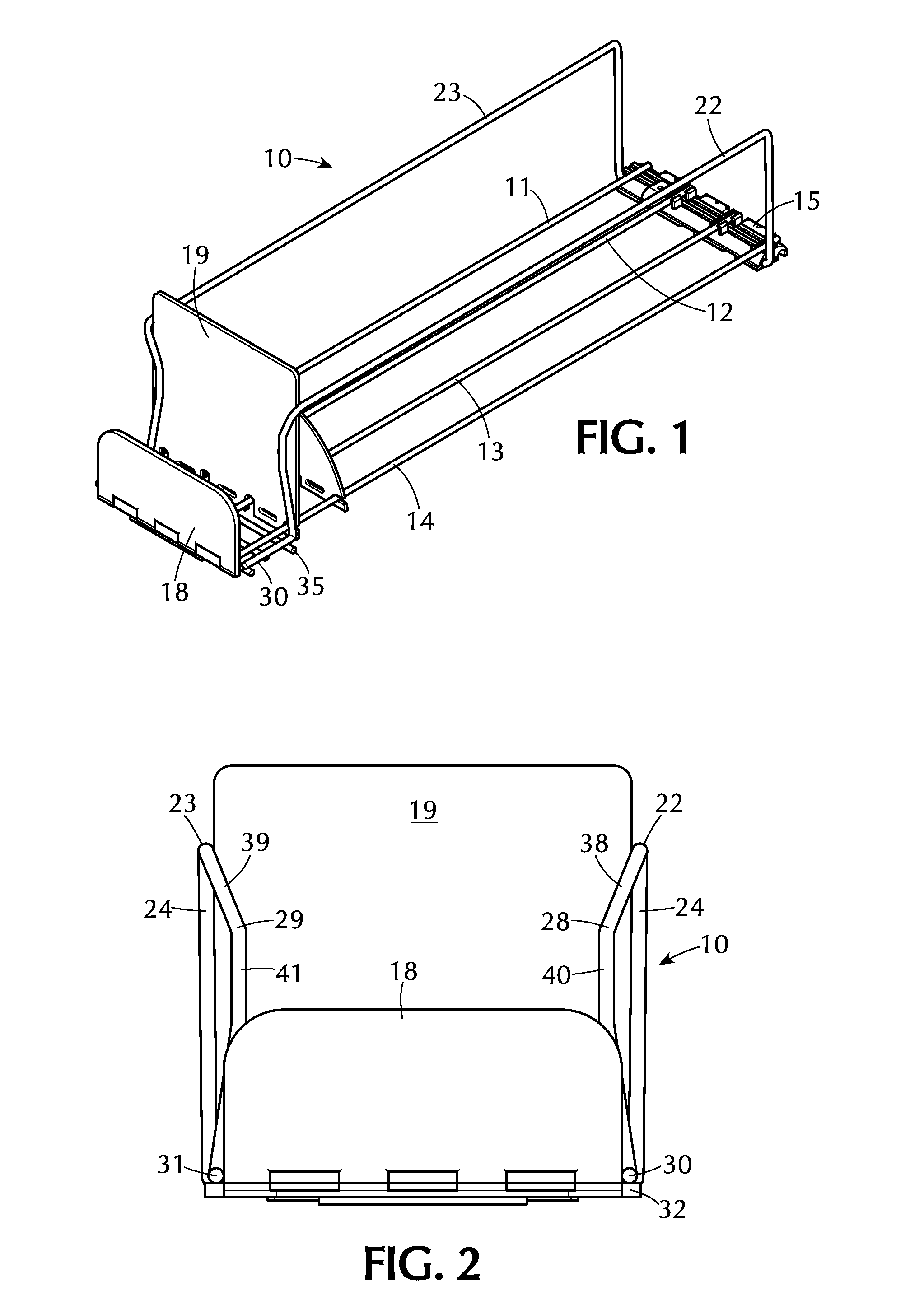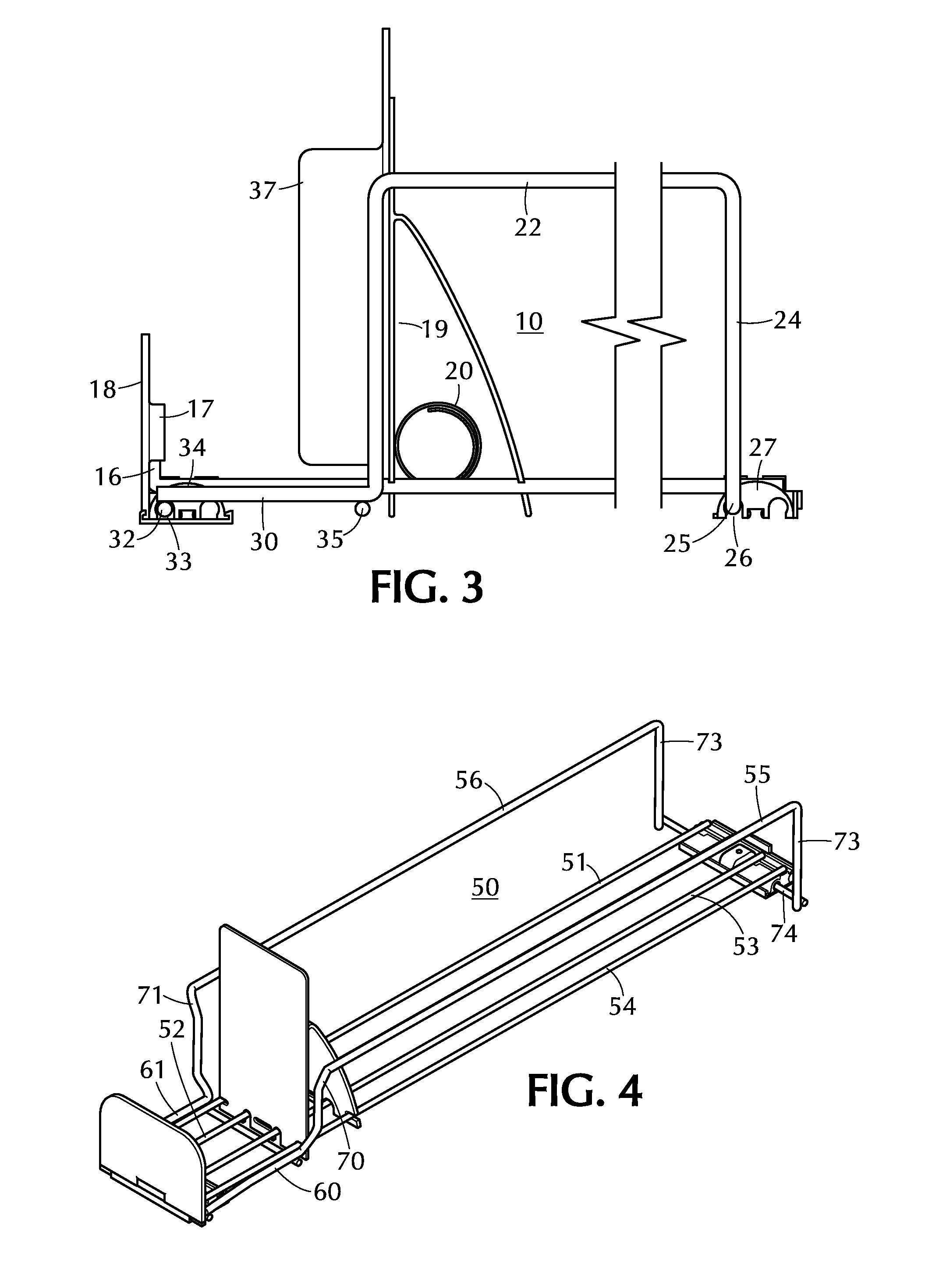Product display tray with pull through feature
a technology of product display and pull-through, which is applied in the direction of instruments, apparatus for dispensing discrete objects, de-stacking articles, etc., can solve the problems of difficult or impossible normal upward removal of packages, difficult for some customers, and difficult to handle products of this type, so as to facilitate the removal process of packages and facilitate the deflecting
- Summary
- Abstract
- Description
- Claims
- Application Information
AI Technical Summary
Benefits of technology
Problems solved by technology
Method used
Image
Examples
Embodiment Construction
[0025]Referring now to the drawing, and initially to FIGS. 1-3 thereof, the reference numeral 10 designates generally a preferred form of product display tray in which the features of the invention are advantageously incorporated. Features of such display trays are shown in U.S. Pat. Nos. 6,745,906, 6,866,155, 6,866,700, 6,889,855 and 7,032,761, and the disclosures of these patents are incorporated herein by reference. In the illustrated form of tray, shown best in FIGS. 1 and 2, there is a tray base structure formed of four longitudinally extending wires 11-14. These longitudinally extending wires are joined at their back edges by a rear cross bar 15. At the forward end of the wire base structure there is a front cross bar (not shown) which is fixed to the forward ends of the two internal wires 12, 13 and is fixed to the outside wires 11, 14 adjacent the forwardmost end portions thereof. In the illustrated tray, the forward extremities 16 of the outer wires 11, 14 are bent upwardly...
PUM
 Login to View More
Login to View More Abstract
Description
Claims
Application Information
 Login to View More
Login to View More - R&D
- Intellectual Property
- Life Sciences
- Materials
- Tech Scout
- Unparalleled Data Quality
- Higher Quality Content
- 60% Fewer Hallucinations
Browse by: Latest US Patents, China's latest patents, Technical Efficacy Thesaurus, Application Domain, Technology Topic, Popular Technical Reports.
© 2025 PatSnap. All rights reserved.Legal|Privacy policy|Modern Slavery Act Transparency Statement|Sitemap|About US| Contact US: help@patsnap.com



